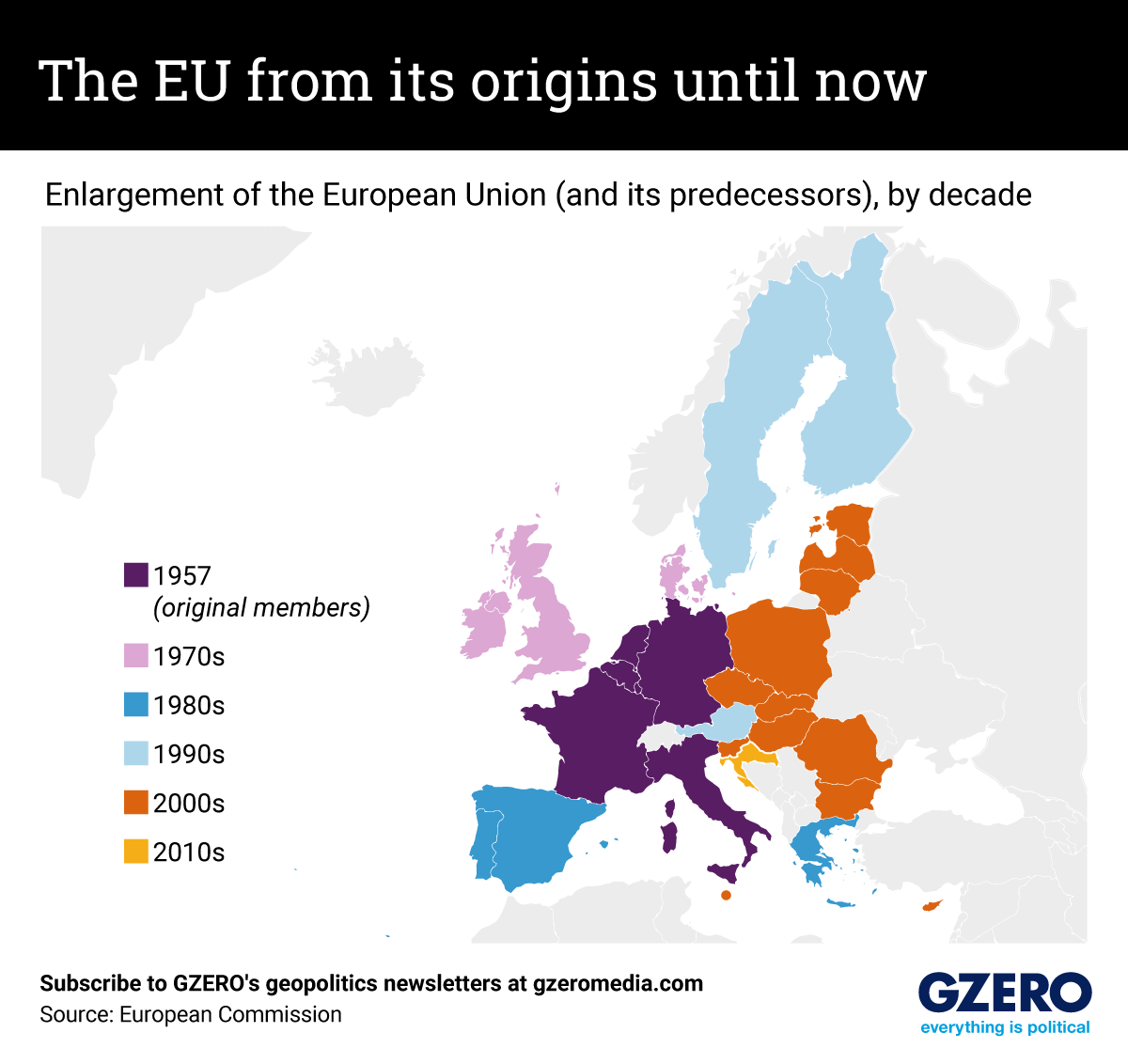July 02, 2023
It’s been 10 years since the world’s largest economic bloc, the European Union, last expanded, admitting Croatia in July 2013. Amid the perennial challenges of getting more than two dozen countries to agree on common policies, and the constant wrangling between national capitals and Brussels over issues like budgets, immigration, or sanctions, it’s easy to forget that the EU, for all its faults, has anchored the longest period of relative peace in Western Europe since the Roman Empire.
How has it grown over that time? The 27-member bloc began in the 1950s as an economic grouping of six Western European countries, and from the 1970s onwards it expanded. The 1990s saw the creation of a single market, common currency, and visa-free travel, while the 2000s saw the Union’s biggest enlargement to date: a dozen countries, all but two of them from the former Soviet bloc. Only one country has ever left the EU, of course, but you know that story.
Currently, accession negotiations are farthest along with Serbia and Montenegro, though there have been calls to accelerate talks with Ukraine as a bulwark against future Russian encroachment. Here is a map showing when, and where, the EU has expanded over the years.
More For You
- YouTube
While Gaza and Ukraine dominate headlines, dozens of other conflicts—from Haiti to Myanmar to the Congo—get far less global attention. International Crisis Group’s Comfort Ero joins Ian Bremmer on GZERO World.
Most Popular
US President Donald Trump arrives to announce reciprocal tariffs against US trading partners in the Rose Garden of the White House in Washington, DC, USA, on April 2, 2025.
POOL via CNP/INSTARimages.com
From civil conflicts to trade wars to the rise of new technologies, GZERO runs through the stories that have shaped this year in geopolitics.
Ukrainian serviceman walks near apartment buildings damaged by Russian military strike, amid Russia's attack on Ukraine, in the frontline town of Kostiantynivka in Donetsk region, Ukraine December 20, 2025.
Oleg Petrasiuk/Press Service of the 24th King Danylo Separate Mechanized Brigade of the Ukrainian Armed Forces/Handout via REUTERS
Ukrainian intelligence services assassinated a senior Russian general on the streets of Moscow on Monday, detonating a bomb strapped to his car.
French President Emmanuel Macron arrives at the July 14, 2025 military parade on the Champs-Elysees in Paris. - 14/07/2025 - France / Ile-de-France (region) / Paris
Julien Mattia / Le Pictorium.
1: French President Emmanuel Macron announced plans to build France’s first aircraft carrier in decades, as Europe accelerates rearmament.
© 2025 GZERO Media. All Rights Reserved | A Eurasia Group media company.
